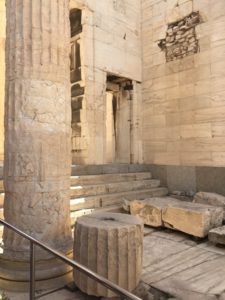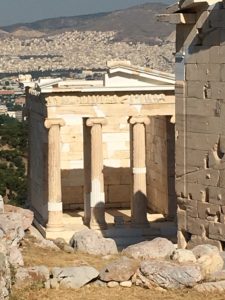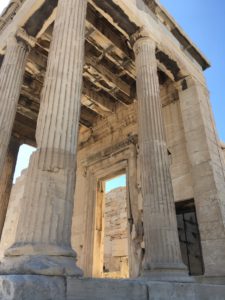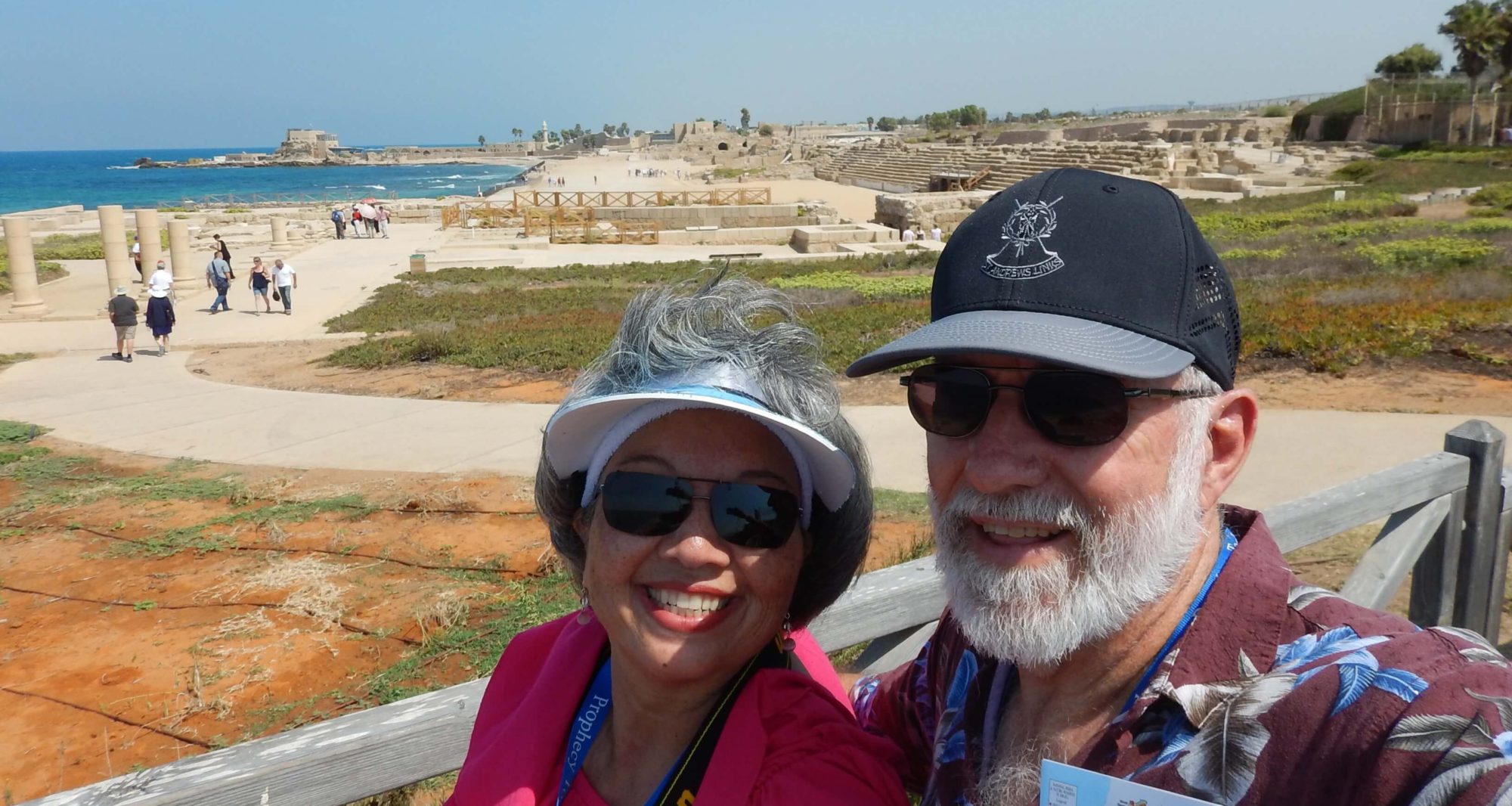“Then Paul stood in the midst of Mars’ hill, and said, Ye men of Athens, I perceive that in all things ye are too superstitious. For as I passed by, and beheld your devotions, I found an altar with this inscription, TO THE UNKNOWN GOD. Whom therefore ye ignorantly worship, him declare I unto you.” Acts 17:22-23
The Classic Period of Greece was between 500-300 BC. During this time, there were many Greek accomplishments in art, literature, architecture, and politics. Many of these accomplishments formed the foundations upon which modern civilization was built. Democratic processes, including voting, began here in Athens.
Acropolis
The Acropolis Hill overlooks the capital city of Greece. It is composed of four main structures: the Propylaia, the temple of Athena Nike, the Parthenon, and the Erectheion. These structures were heavily damaged by the invaders of the Crusades and the Ottomans.

Propylaia
The is the palace we walked through to enter the grounds of the Acropolis. The entrances of palaces and temples are always on the east side of the structure.

Temple of Nike
This temple is dedicated to the goddess of victory. To the Greeks, victory was everything. They even celebrated the soldiers victories before they went into battles.

Erectheion
This temple uses Ionian columns. Ionic columns are slender with a plain top section known as the “capital.” The temple’s north side is dedicated to Poseidon.

The south side has the Porches of the Caryatids (maidens).

Parthenon
This white Doric marble structure is dedicated to the goddess of wisdom, Athena. Construction began in 447 BC and finished in 438 BC. Doric columns have tops (capitals) that are plain, and the columns themselves are somewhat bulky.

Above the columns there are carving dedicated to those who live “above the moon” and follow circular movements. Everything “under the moon” follows vertical movements (ex: rockets launch vertically). This was Aristotle’s theory. We live under the moon, so we are vertical. Everything to which we aspire is higher (vertical). Planets are above the moon, and they have a circular movement.

Temple of Zeus
This was completed in 456 BC. Today, there are 15 of the original 42-ft Corinthian columns remaining. Corinthian architecture has columns where the tops, or “capitals,” are highly decorated and ornate.

Olympic Stadium
Our guide made an unscheduled photo
stop for us at the Olympic Stadium. Although it has been restored, this is the original Olympic stadium from 1896.

Lunch
Lunch was at the Chocolat Royal. Appetizers: olives and vegetable and potato dip, various breads. Salad: chicken pie, stuffed pepper with feta cheese, and crouton with tomato and feta, Greek salad. Entree: chicken with sauce, potato, zucchini, peppered, eggplant. Dessert: strawberry cheesecake.

Ancient Agora
Area of meeting for both commercial and political. Stadium games were held on its main road prior to the building of the Olympic stadium.

Top: Mars Hill where the apostle Paul preached, overlooking the ancient agora. Bottom left: temple of Hephistheses, agora walkway, statues of philosophers
Next stop: Santorini, Greece
